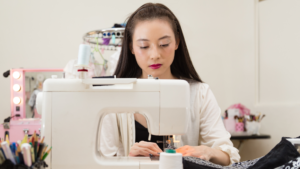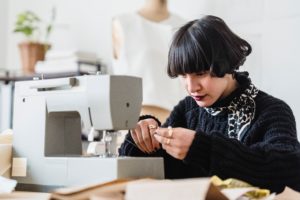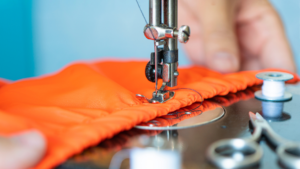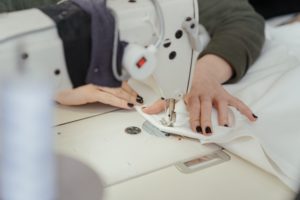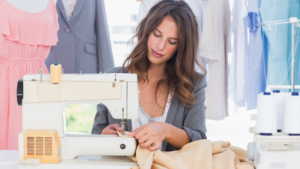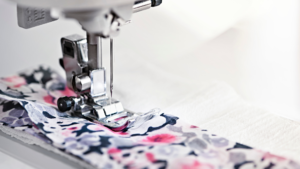Last Updated on June 1, 2022
Are you ready to learn about the different types of sewing machines, especially if you are in the market for a new one? In this article will will show you the 10 most popular types.
There are two main types of sewing machines, which are subsequently subdivided into different varieties. The two primary types are Domestic and Industrial.
With so many machines available on the market, deciding what’s best for your needs may be daunting.
Don’t worry, though. We’ve got you covered!
Here are the different types of sewing machines categorized into two main categories.
Domestic Types of Sewing Machines
A domestic sewing machine is intended for household use. Domestic or home sewing machines are versatile and are designed for a broad range of sewing tasks often undertaken by sewing enthusiasts. The six main varieties of domestic (for home usage) machines are as follows:
Manual Sewing Machine
Manual sewing machines depend entirely on the tailor’s pedaling. As a result, the motor is less prone to clogging or slowing in motion, making it more preferable to people who seek durability. In addition, the engine does not need power or a battery to operate, making it cost-effective.
They have fundamental characteristics and do not provide a wide range of computerized equipment. Because of its more straightforward functionality, this type of machine appeals to many new learners.
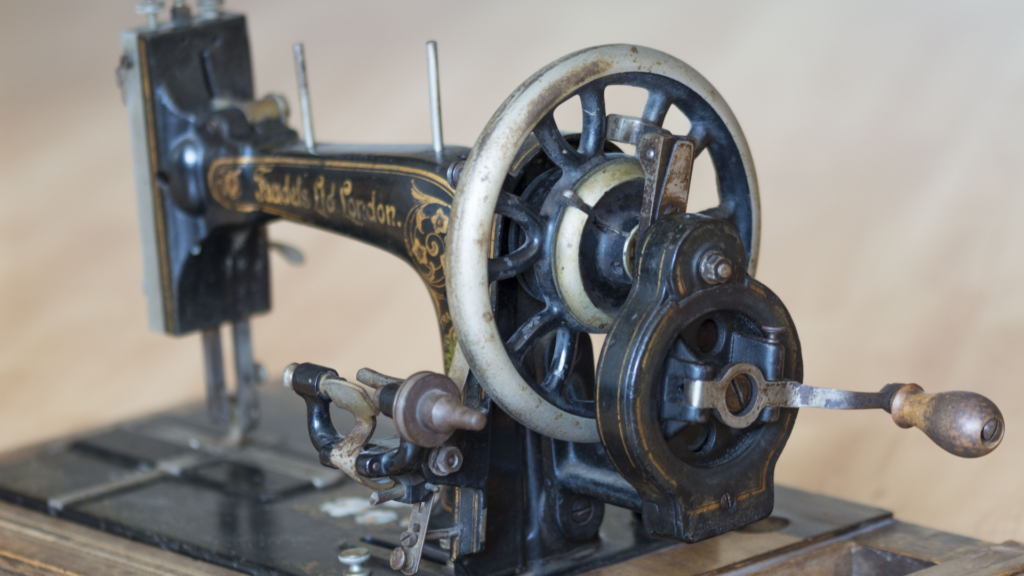
Electronic Sewing Machine
Electronic sewing machines draw electricity from a single motor and transmit it to the needle by applying the appropriate pressure to the foot pedal. There are many electrical machine manufacturers to select from, each with its own set of stitches and stitch lengths. This type of machine will straight zigzag, stitch, and have certain ornamental stitches.
Overlock or Serger Machine
Overlock sewing machines are primarily used to produce hems, seams, and edges. They are used to stitch over the edges of a fabric or two to make error-free edges. Most of these devices have a specialized cutter that cuts the edge while creating a perfect seam. They have high speeds and are mainly utilized in industries.
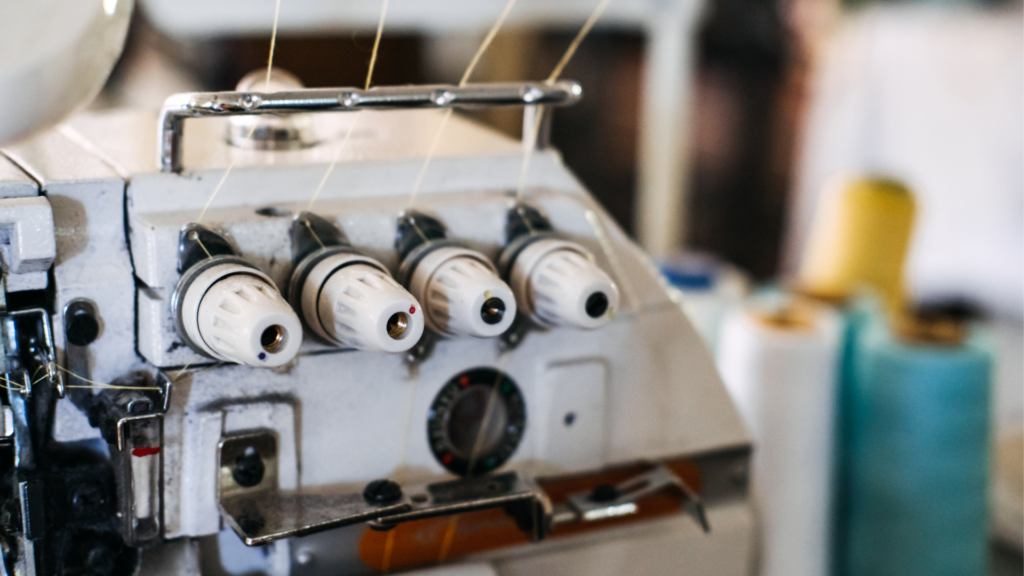
Embroidery Sewing Machine
Embroidery sewing machines are devices that are used to create complex embroidery patterns on certain materials.
The majority of embroidery machines are wholly computerized and have an LED or LCD touchscreen. Even if hand embroidery is preferred, machine embroidery is more popular owing to its time-saving capabilities.
People even utilize the machine’s zigzag stitch to make embroideries. However, with the advent of specialized embroidery sewing machines, the use of such devices has decreased significantly. There are three kinds of embroidery machines available in the market today.
These types are as follows:
- Those with a minimal range of options
- The ones that allow you to create your own embroidery
- The ones that enable you to download, share, and transfer the designs utilizing a computer
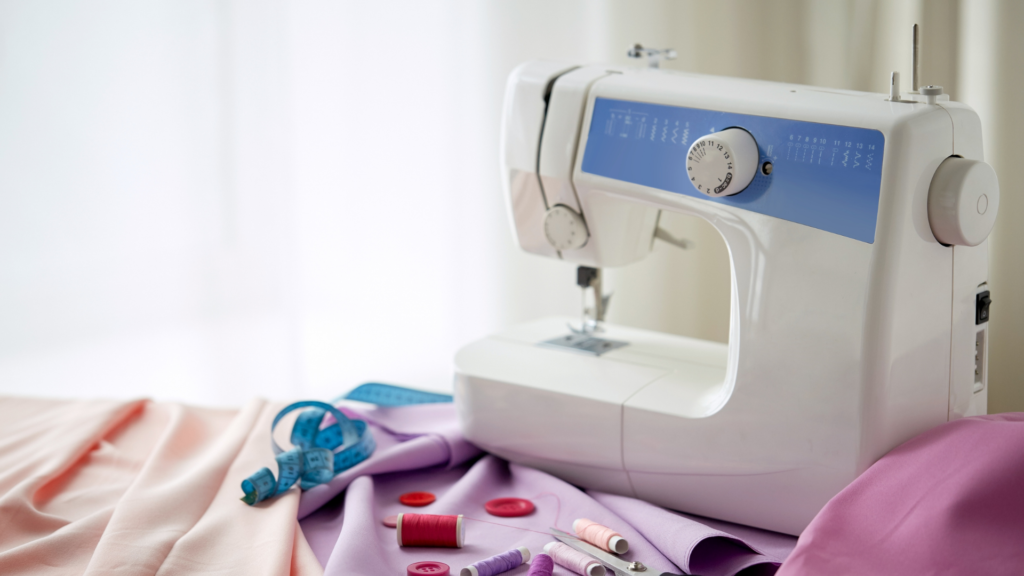
Automated or Computerized Machine
Moving up the machine scale, computerized and fully automated machines offer several additional functions and capabilities. An LCD screen display, automated needle threading, and even embroidery stitches are standard features of the device. There are several tension settings and stitch lengths available.
Buttonholes and stitch programs are incorporated into computerized sewing machines. These machines are more costly, but they are more durable and long-lasting. On these higher-level devices, reputable firms typically provide training and guarantees.
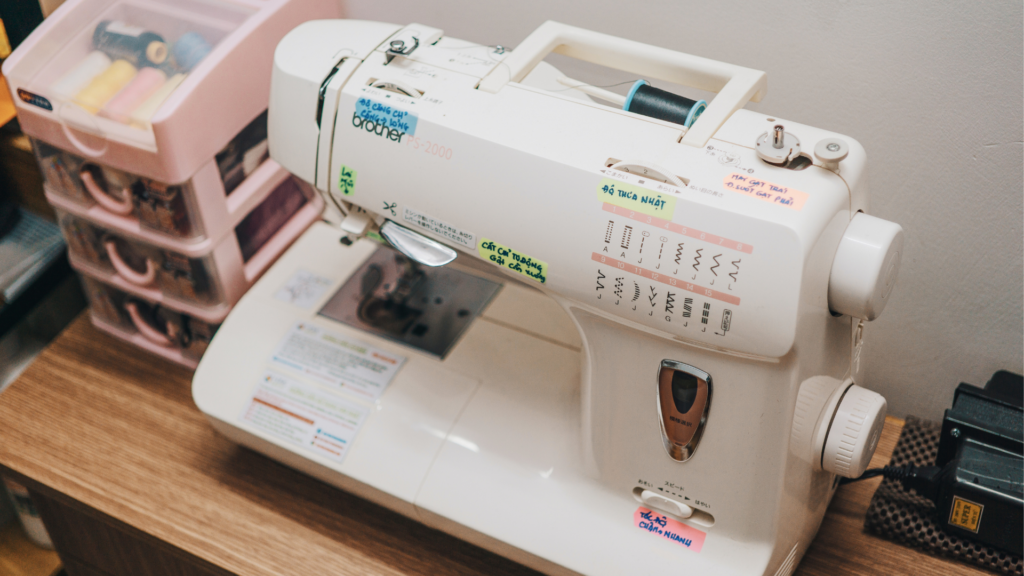
Quilting Machine
If you want to create big quilts, quilting sewing machines are highly recommended.
This machine has a more extended arm, allowing more significant quantities of cloth to run through it. The quilting machine can stitch through more extensive layers of fabric.
As the materials are kept in place, the machine feed guarantees steady and even stitching.
Industrial Types of Sewing Machines
Industrial sewing machines are developed and built-in so that they can withstand the test of time, even after extensive use. As a consequence, the built-in quality is given great attention.
Furthermore, these machines can cut through the most rigid materials without causing a commotion or breaking down. These types of machines are more durable, sophisticated, and powerful than standard household sewing machines.
To add to the quality of the machine’s construction, most of these machines are outfitted with many high-end features that offer you an advantage and choices while working on a project.
When compared to domestic sewing machines, industrial sewing machines are more substantial.
These machines are a more expensive side of the pricing spectrum due to their high-efficiency features and excellent built-in quality.
In specific ways, this has a long-term impact on the price of industrial equipment. Let’s learn more about the four common types of industrial sewing machines listed below.
Flat Bed Sewing Machine
These machines, which are the most popular, are similar to conventional sewing machines in that the arm and needle extend over the flat base of the device. Workers usually use this machine to stitch flat pieces of cloth together. This enables the fabric to move about and below the bed.
Cylinder Bed Sewing Machine
These machines have a narrow, cylindrical bed rather than a flat base. This enables the cloth to move about and below the bed. Workers use the cylinder-bed machine to sew cylindrical components like cuffs, but it is also helpful for bulky and curved goods such as saddles and shoes.
Post Bed Sewing Machine
These types of machines have a high column that contacts the needle well above the bed’s surface. This vertical column enables users to deal with ordinarily tricky objects such as tents, awnings, luggage, shoes, boots, and car upholstery.
Free Arm Sewing Machine
Free arm sewing machines are used to stitch circular items such as t-shirts, sleeves, and cuffs. These machines often come with an attachment that allows you to change the device to a free arm machine or a flatbed machine based on your preferences and needs.
The free arm that comes with the machine is typically used to hold the feed-dog, shuttle, and bobbins. Sewing through can be accomplished by putting the cloth around the arm to provide an extra edge when sewing circular tasks.
Some Final Words
It is fair to say that the sewing machine industry has made tremendous strides in both the household and the factory. If you enjoy sewing and are dedicated to pursuing your pastime into a career, it would be best to familiarize yourself with the different types of sewing machines. By doing so, you probably purchase or invest in something that fits your specifications and needs.

